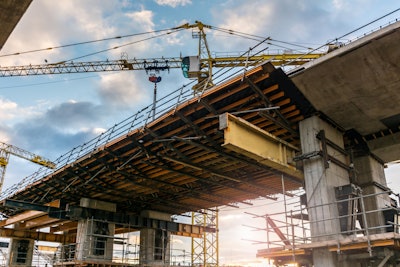
Editor's Note: This story was updated June 5 to note that President Joe Biden signed the bill into law.
With just days to go before the U.S. Treasury was expected to run out of money to pay the nation’s bills, the Senate cast the final vote to seal a deal to extend the debt limit to 2025.
To reach the agreement, the Biden administration and House Republicans hashed out an agreement that cuts spending in some areas while reducing some regulations, which construction groups are applauding.
The legislation was signed June 3 by President Joe Biden to avoid a potentially catastrophic default by the U.S. government on its financial obligations.
Construction industry groups are hailing the passage as not only preventing economic disaster but also easing some rules that they say have hindered the construction industry. Some state departments of transportation, however, could see a reduction in transportation funding.
Here’s a look at some of the ways contractors may benefit from the deal:
Infrastructure permitting curtailed
The biggest benefit for the construction industry, aside from preventing default, appears to be that funding from the $1.2 trillion infrastructure law signed in 2021 will remain intact.
The industry also got a boost in language designed to streamline permitting for projects planned with infrastructure law funding. The legislation sets deadlines for environmental reviews and clarifies permitting requirements.
“These reforms will help contractors complete projects across the country both efficiently and effectively,” says Kristen Swearingen, vice president of legislative and political affairs for Associated Builders and Contractors. “ABC hopes that Congress will continue on this bipartisan path to provide additional reforms to the permitting process and remove more unnecessary and burdensome red tape that has hindered critical construction projects for decades.”
Work requirements for welfare
The new budget also includes additional work requirements for some recipients of the Temporary Assistance for Needy Families program, which includes food stamps. The construction industry has complained that increased federal assistance during the pandemic has given some people an incentive to stay unemployed.
“The agreement’s new work requirements for some individuals receiving federal assistance should help bring more people back into the workforce,” says Stephen Sandherr, CEO of the Associated General Contractors of America. “It is no secret that pandemic-era measures that paid people not to work have resulted in severe workforce shortages in virtually every sector of the economy. These shortages have undermined economic growth, including in construction.”
Clean energy funding
Though some environmental regulations have been rolled back, the legislation does not affect the Inflation Reduction Act's climate and clean energy provisions, according to the American Council of Engineering Companies. That law includes investments in clean energy and tax breaks to reduce carbon emissions, which could also help the construction industry as it leads to new infrastructure investments in clean energy, transportation and the environment.
Possible Transportation Funding Cut
One area of the legislation, however, that could hurt contractors concerns Covid relief money, with some losses of federal transportation funding to state and local governments, according to the American Association of State Highway and Transportation Officials.
That's because the agreement calls for rescinding $28 billion in unobligated funding appropriated during the pandemic. The cut includes about $1.67 billion for highway infrastructure that has not yet been obligated. AASHTO adds, though, that state and local governments were rushing to obligate the funding before the law took effect.















